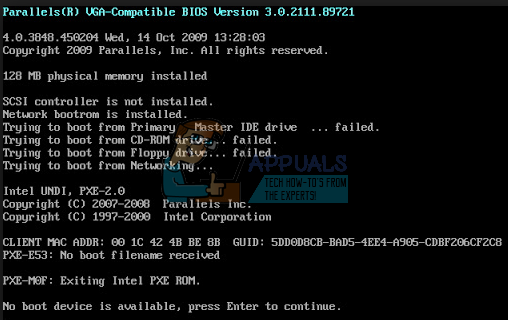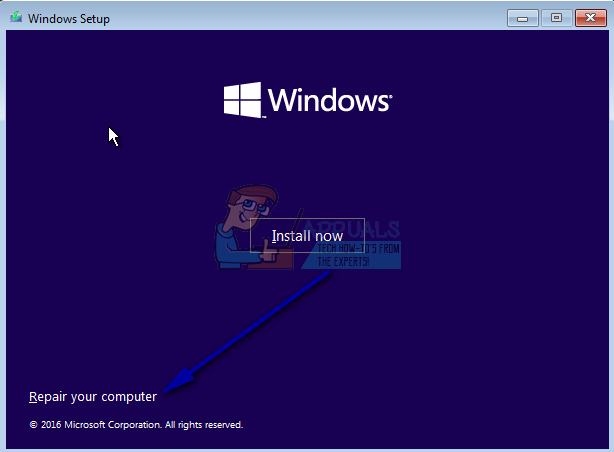Fix: ‘No boot device found’ Error on Acer, DELL or Toshiba Systems
Many Windows users have been affected by an issue where their computers fail to start up, and they are met with a black screen with an error message stating “No bootable device found” no matter how many times they try to start their computers up. This error message basically means that the affected computer was unable to gain access to the HDD/SSD that contains its boot information or that it scanned all connected HDDs/SSDs for boot information and did not find any.

This problem has been known to mostly affect Windows 8 and 8.1, but there is nothing stopping it from preying on Windows 10 users. Not being able to boot your computer into Windows is, in and of itself, a pretty huge problem, and it only gets worse when combined with the looming thoughts of your installation of Windows going bad or your computer’s HDD/SSD failing. Thankfully, though, this issue can be fixed without even having to boot into Windows, but you are going to need a Windows installation disc or USB that contains installation files for the same version and architecture of Windows that is currently installed on your computer. Here’s what you need to do:
- Insert the Windows installation disc or USB into the affected computer and restart
- As soon as the computer starts booting up, get into its BIOS settings and configure the computer’s boot order to boot from the installation media instead of its HDD/SSD. Instructions for getting into the computer’s BIOS will vary from one computer to the other but will almost always be found on the first screen you see when the computer boots up.
- Save the changes and exit the BIOS

- If prompted to do so, press any key to boot from the installation media.

- Select your language, time zone and keyboard layout preferences and then click on Next.

- When you reach a window with an Install now button at its center, look for and click on Repair your computer in the bottom left corner of the window.

You should now arrive at the Startup Options screen. Once you are here, you need to:
- Click on Troubleshoot > Advanced options.
- Click on Command Prompt, and a Command Prompt will be launched.
- One by one, type the following commands into the Command Prompt, pressing Enter after typing in each one:
diskpart list disk sel disk X (replace X with the number corresponding to the disk Windows is installed on) list partition create partition efi
Note: If you see an error message stating that there is not enough space for the new partition after running the last command, type the following commands into the Command Prompt, pressing Enter after typing in each one:
sel partition X (replace X with the number corresponding to the largest partition on the disk) shrink desired = 200 minimum = 200 create partition efi
- Type the following commands into the Command Prompt, pressing Enter after typing in each one:
list partition sel partition X (replace X with the number corresponding to the new partition you created) format fs=fat32 list partition sel partition X (again, replace X with the number corresponding to the newly created partition) assign letter = b: exit
- Type the following commands into the Command Prompt, pressing Enter after typing in each one:
dir b: mkdir b:\EFI\ mkdir b:\EFI\Microsoft cd /d b:\EFI\Microsoft bootrec /fixboot bcdboot C:\Windows /l en-us /s b: /f ALL dir dir Boot exit
- Exit the Windows Recovery Environment and remove the installation media from the computer.
- Restart the computer and check to see whether or not it boots up successfully without running into the “No bootable device found” error message.
If the problem is not fixed, the root of the issue may be more severe – such as a failed or failing HDD/SSD. If that’s the case, you should have your computer looked at by a professional or, if it is still under warranty, send it back to its manufacturer to have it examined.